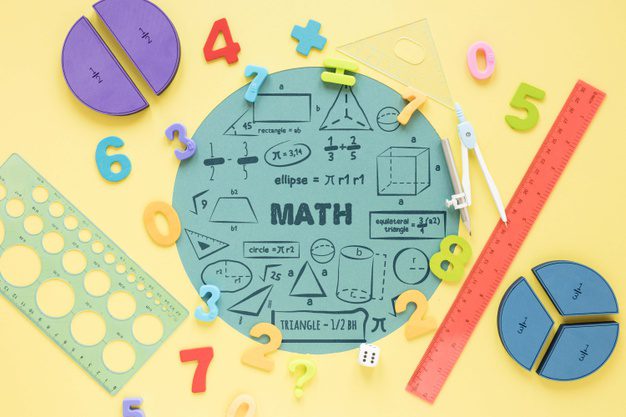MATHEMATICS
- Description
- Curriculum
- Reviews
- Grade
Mathematics supports learners in building competency, confidence and fluency in their use of techniques and mathematical understanding. This course helps learners to develop a feel for quantity, patterns and relationships. Learners will develop their reasoning, problem-solving and analytical skills in a variety of abstract and real-life contexts. Our aim is for the learner to have better knowledge and understanding the following topics at the end of this subject :
NUMBERS & ALGEBRA:
Algebra is the branch of mathematics that helps in the representation of problems or situations in the form of mathematical expressions.It involves variables like x, y, z, and mathematical operations like addition, subtraction, multiplication, and division to form a meaningful mathematical expression. All the branches of mathematics such as trigonometry, calculus, coordinate geometry, involve the use of algebra. One simple example of an expression in algebra is 2x + 4 = 8.
LAWS OF INDICES :
An index is a small number that tells us how many times a term has been multiplied by itself. The plural of index is indices. Indices can be positive or negative numbers. Indices are the small numbers in the top right corner of a number and raise your base to a power, e.g. 24 = 16 because it means 2 x 2 x 2 x 2.
FRACTIONS :
Fractions represent the parts of a whole or collection of objects. A fraction has two parts. The number on the top of the line is called the numerator. It tells how many equal parts of the whole or collection are taken. The number below the line is called the denominator. It shows the total number of equal parts the whole is divided into or the total number of the same objects in a collection.
DECIMALS :
A decimal is a number that consists of a whole and a fractional part. Decimal numbers lie between integers and represent numerical value for quantities that are whole plus some part of a whole. We get decimals when we break a whole into smaller parts. A decimal number then has two components: a whole number part and a fractional part. The decimal place value system for the whole part of a decimal number is the same as the whole number value system. However, we get the fractional part of the decimal number as we move toward the right after the decimal point.
PERCENTAGES :
Percentages represent an amount out of 100. This provides a consistent base to compare against when looking at fractional parts. For example, 50%, means 50 out of 100. 50% is the same as one half. Percentages are often used instead of fractions and decimals. This is because parts of 100 can be easier to understand.

Popular Subjects
Working hours
| Monday | 9:30 am - 6.00 pm |
| Tuesday | 9:30 am - 6.00 pm |
| Wednesday | 9:30 am - 6.00 pm |
| Thursday | 9:30 am - 6.00 pm |
| Friday | 9:30 am - 5.00 pm |
| Saturday | Closed |
| Sunday | Closed |
About
The Most Secure & Collaborative Learning Platform.
Classmate is an Inclusive, Social E-Learning platform, for students and educators to access educational content and promote collaborative learning.
The solution has been developed after making an assessment that there is a need for students to interact outside the classroom yet enjoying the classroom set up with the additional freedom of engagement
Popular Subjects











